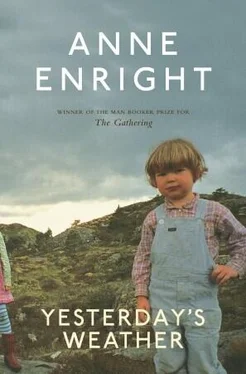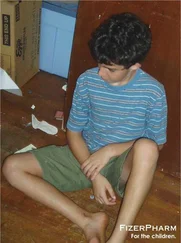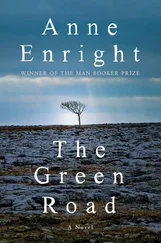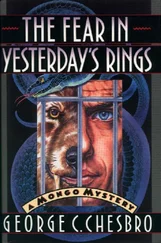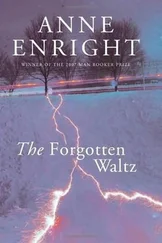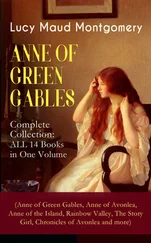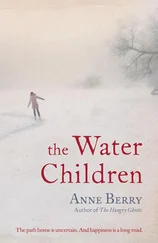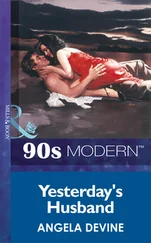Kal eid oscope: Something beautiful I see. This is the simplest and the most magical toy; made from a tube and two mirrors, some glass and coloured beads.
The British Cyclopaedia describes the invention in 1833. ‘If any object, however ugly or irregular in itself, be placed (in it) … every image of the object will coalesce into a form mathematically symmetrical and highly pleasing to the eye. If the object be put in motion, the combination of images will likewise be put in motion, and new forms, perfectly different, but equally symmetrical, will successively present themselves, sometimes vanishing in the centre, sometimes emerging from it, and sometimes playing around in double and opposite oscillations.’
The two mirrors in a kaleidoscope do not reflect each other to infinity. They are set at an angle, so that their reflections open out like a flower, meet at the bottom and overlap.
When she plays with it, her hand does not understand what her eye can see. It can not hold the secret size that the mirrors unfold.
She came down to London for the season and met a young man who told her the secrets of glass. The ballroom was glittering with the light of a chandelier that hung like a bunch of tears, dripping radiance over the dancers. She was, of course, beautiful, in this shattered light and her simple white dress.
He told her that glass was sand, melted in a white hot crucible: white sand, silver sand, pearl ash, powdered quartz. He mentioned glasswort, the plant from which potash is made; the red oxide of lead, the black oxide of manganese. He told her how arsenic is added to plate glass to restore its transparency, how a white poison made it clear.
Scientific conversation was of course fashionable at the time, and boredom polite, but David Brewster caught a spark in the young girl’s eye that changed all these dull facts into the red-hot liquid of his heart.
He told her how glass must be cooled or it will explode at the slightest touch.
After their first meeting he sent her in a box set with velvet, Lacrymae Vitreae, or Prince Rupert’s Drops: glass tears that have been dripped into water. In his note, he explained that the marvellous quality of these tears is that they withstand all kinds of force applied to the thick end, but burst into the finest dust if a fragment is broken from the thin end. He urged her to keep them safe.
Mr MacPherson’s daughter and Dr (soon to be Sir) David Brewster were in love.
* * *
There is a difference between reflection and refraction, between bouncing light and bending it, between letting it loose and various, or twisting it and making it simple. As I mentioned before, Sir David’s life’s work was to make light simple, something he did for the glory of man and God. Despite the way her eyes sparkled when she smiled, and the molten state of his heart, Sir David’s work was strenuous, simple and hard. He spent long hours computing angles, taking the rainbow apart.
Imagine the man of science and his young bride on their wedding night, as she sits in front of the mirror and combs her hair, with the light of candles playing in the shadows of her face. Perhaps there are two mirrors on the dressing table, and she is reflected twice. Perhaps it was not necessary for there to be two, in order for Sir David to sense, in or around that moment, the idea of the kaleidoscope; because in their marriage bed, new forms, perfectly different, but equally symmetrical, successively presented themselves, sometimes vanishing in the centre, sometimes emerging from it, and sometimes playing around in double and opposite oscillations.
(One of the most beautiful things about the kaleidoscope is, of course, that it is bigger on the inside. A simple trick which is done with mirrors.)
In those days, these people had a peculiar and terrible fear of being buried alive. This resulted in a fashionable device which was rented out to the bereaved. A glass ball sat on the corpse’s chest, and was connected, by a series of counterweights, pulleys and levers, to the air above. If the body started to breathe, the movement would set off the mechanism, and cause a white flag to be raised above the grave. White, being the colour of surrender, made it look as if death had laid siege, and failed.
Death laid early siege to the bed of Sir David Brewster and his wife. She was to die suitably; pale and wasted against the pillows, her translucent hand holding a handkerchief, spotted with blood. It was a time when people took a long time to die, especially the young.
It is difficult to say what broke her, a chance remark about the rainbow perhaps, when they were out for their daily walk, and he explained the importance of the angle of forty-two degrees. Or drinking a cup of warm milk with her father’s book on her lap, and finding the skin in her mouth. Or looking in the mirror one day and licking it.
It was while she was dying that Sir David stumbled upon the kaleidoscope. He thought of her in the ballroom, when he first set eyes on her. He thought of her in front of the mirror. He built her a toy to make her smile in her last days.
When she plays with it, the iris of her eye twists and widens with delight.
Because of her horror of being buried alive, Sir David may have had his wife secretly cremated. From her bone-ash he caused to be blown a glass bowl with an opalescent white skin. In it he put the Lacrymae Vitreae, the glass tears that were his first gift. Because the simple fact was, that Sir David Brewster’s wife was not happy. She had no reason to be.
Sir David was sitting in his study, with the fire dying in the grate, his lens of Iceland spar abandoned by his side. He was surprised to find that he had been crying, and he lifted his head slowly from his hands, to wipe away the tears. It was at that moment that he was visited by his wife’s ghost, who was also weeping.
She stood between him, the window and the snow outside. She held her hands out to him and the image shifted as she tried to speak. He saw, in his panic, that she could not be seen in the glass, though he saw himself there. Nor was she visible in the mirror, much as the stories told. He noted vague shimmerings of colour at the edge of the shape that were truly ‘spectral’ in their nature, being arranged in bands. He also perceived, after she had gone, a vague smell of ginger in the room.
Sir David took this visitation as a promise and a sign. In the quiet of reflection, he regretted that he had not been able to view this spectral light through his polarising lens. This oversight did not, however, stop him claiming the test, in a paper which he wrote on the subject. Sir David was not a dishonest man, nor was he cold. He considered it one of the most important lies of his life. It was an age full of ghosts as well as science, and the now forgotten paper was eagerly passed from hand to hand.
* * *
Ruth’s mother was deaf. Her mouth hung slightly ajar. When Ruth was small her mother would press her lips against her cheek and make a small, rude sound. She used all of her body when she spoke and her voice came from the wrong place. She taught Ruth sign language and how to read lips. As a child, Ruth dreamt about sound in shapes.
Sometimes her mother would listen to her through the table, with her face flat against the wood. She bought her a piano and listened to her play it through her hand. She could hear with any part of her body.
Of course Ruth was a wonder child, clever and shy. When her ears were tested the doctor said ‘That child could hear the grass grow Mrs Rooney.’ Her mother didn’t care. For all she knew, the grass was loud as trumpets.
Her mother told Ruth not to worry. She said that in her dreams she could hear everything. But Ruth’s own dreams were silent. Perhaps that was the real difference between them.
Читать дальше
